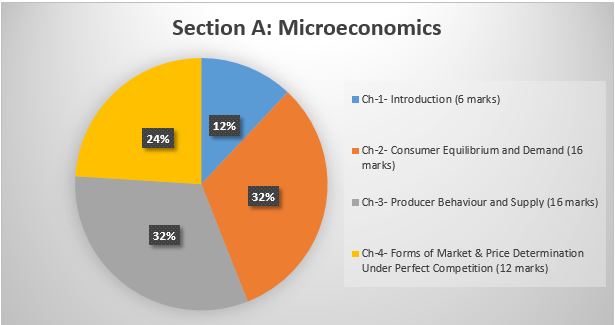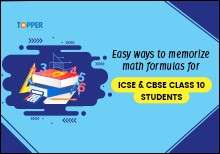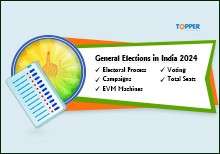Expert Tips and Tricks to Score Full Marks in the CBSE Class 12 Economics Paper

Pointers to help you understand how to crack the CBSE Class 12 Economics Paper in the simplest and shortest way
By 20th Feb, 2018 | 01:32 pm
ShareThe board exam date sheet for Class 12 is out, and the board exams inch closer by the day. You must be having exam jitters and are looking for ways to fetch good marks in the paper. We know that everyone wants to score full marks in Economics. But how? To know how and the ways to score full marks in Economics, you should first know the exam paper pattern, weightage of chapters, chapter-wise important topics and have some handy study tips.
CBSE Class 12 Economics Exam paper pattern
The Economics paper has questions of 1, 3, 4 and 6 marks. There are 10 questions of 1 mark each in the very short answer category, 6 questions of 3 marks each in the first short answer category, 6 questions of 4 marks each in the second short answer category, and 8 questions of 6 marks each in the long answer category.
In the paper, students will be tested on Remembering, Understanding, Application, HOTS and Evaluation skills. The weightage of Remembering and Understanding is 25% each. On the other hand, Application, HOTS and Evaluation account for about 50%. So, it is essential that you use the conceptual knowledge to real-life situations and understand the topics instead of cramming them into your head.
Also, a point should be noted here that there is an internal choice in questions of 3, 4 and 6 marks in both sections A and B. A total of 3 internal choices in Section A and 3 internal choices in Section B will feature in the paper.
CBSE Class 12 Economics Question Paper Pattern
|
S. No. |
Typology |
VSA (1 mark) |
SA I (3 marks) |
SA II (4 marks) |
LA (6 marks) |
Marks |
% |
|
1 |
Remembering |
2 |
1 |
2 |
2 |
25 |
25 |
|
2 |
Understanding |
3 |
2 |
1 |
2 |
25 |
25 |
|
3 |
Application |
3 |
1 |
2 |
1 |
20 |
20 |
|
4 |
HOTS |
1 |
1 |
1 |
2 |
20 |
20 |
|
5 |
Evaluation |
1 |
1 |
- |
1 |
10 |
10 |
|
Total |
10 × 1 = 10 |
6 × 3 = 18 |
6 × 4 = 24 |
8 × 6 = 48 |
100 |
100% |
|
Also check out Sample Papers for CBSE Class 12 Economics
CBSE Class 12 EconomicsWeightage of Chapters
In Economics, there are two sections, which are Microeconomics and Macroeconomics, for 50 marks each. There are 4 chapters in Microeconomics which are as follows:
- Chapter 1: Introduction
- Chapter 2: Consumer Equilibrium and Demand
- Chapter 3: Producer Behaviour and Supply
- Chapter 4: Forms of Market and Price Determination Under Perfect Competition with Simple Applications
The weightage of chapters of Microeconomics has been shown below in the form of a pie diagram.
In Macroeconomics, there are 5 chapters which are as listed below:
- Chapter 5: National Income and Related Aggregates
- Chapter 6: Money and Banking
- Chapter 7: Determination of Income and Employment
- Chapter 8: Government Budget and the Economy
- Chapter 9: Balance of Payments
The below pie diagram depicts the weightage of each chapter of Macroeconomics.
Chapter-wise Important Topics
To fetch good marks in Economics, you should focus and give more attention to the most important topics from the examination point of view.
|
PART A: INTRODUCTORY MICROECONOMICS |
|
|
Chapter Name |
Important Topics |
|
Ch 1: Introduction |
• Central Problems of an Economy • Concept of Production Possibility Curve (PPC) |
|
Ch 2: Consumer’s Equilibrium and Demand |
• Consumer’s Equilibrium • Measurement of Price Elasticity of Demand |
|
Ch 3: Producer’s Behaviour and Supply |
• Returns to a Factor • Types of Costs and Revenue • Producer’s Equilibrium |
|
Ch 4: Forms of Market and Price Determination under Perfect Competition with Simple Applications |
• Price Ceiling and Price Floor • Features of all Market Forms • Effects of Shifts in Demand and Supply |
|
PART B: INTRODUCTORY MACROECONOMICS |
|
|
Chapter Name |
Important Topics |
|
Ch 5: National Income and Related Aggregates |
• Methods of Calculating National Income • Calculation of Aggregates Related to National Income |
|
Ch 6: Money and Banking |
• Functions of Money • Money Creation by Commercial Banking System • Functions of Central Bank & Instruments of Monetary Policy |
|
Ch 7: Determination of Income and Employment |
• Equilibrium Output & Investment multiplier • Concepts of Excess Demand & Deficient Demand |
|
Ch 8: Government Budget and the Economy |
• Components of Government Budget • Measures of Government Deficit |
|
Ch 9: Balance of Payments |
• Components of Balance of Payments Account • Fixed and Flexible Exchange Rates |
How to prepare for theCBSE Class 12 Economics exam
After going through the most important topics chapter-wise, follow these five easy study-related tips to attain a maximum score in the examination.
Step 1: Thoroughly read, understand and master all the topics given in the NCERT books as NCERT books are prescribed by CBSE. For more practice and knowledge, you can also refer to various reference books which are available in the market.
Step 2: Make effective notes of chapter-wise definitions, important points, formulae, relationships between different economic variables and also highlight the important parts of the points while making notes. This will help you during the final revision before the examination.
Step 3: After understanding the concepts and making your notes, you need to test your knowledge and understanding. This can be done by solving sample papers and past year papers which will give you an idea about the paper pattern.
You can practise with TopperLearning sample papers for Class 12 Economics available at
https://www.topperlearning.com/learn/sample-papers/cbse/class-12-commerce/economics/b101c504s24e2
Past year papers are also a great way to be confident of knowing what to expect in the exams. For Class 12 Economics, past year papers for the last 6 years are available at
https://www.topperlearning.com/learn/previous-year-question-papers/cbse/class-12-commerce/economics/b101c504s24e8
Do practise them to boost your confidence and familiarise yourself with the paper pattern and marking scheme
Step 4: To become a top scorer, you need to regularly revise all the concepts. Regular revision ensures that you don’t forget the previously learned concepts.
Step 5: Economics is a combination of theory and numericals. For the theory portion, you should practise writing so as to increase your writing skills. For the numerical portion, practise as much numericals as you can.
So, in conclusion, keep calm and practise before your Economics board paper because you now know how to get more marks!
|
PART B: INTRODUCTORY MACROECONOMICS |
|
|
Chapter Name |
Important Topics |
|
Ch 5: National Income and Related Aggregates |
• Methods of Calculating National Income • Calculation of Aggregates Related to National Income |
|
Ch 6: Money and Banking |
• Functions of Money • Money Creation by Commercial Banking System • Functions of Central Bank & Instruments of Monetary Policy |
|
Ch 7: Determination of Income and Employment |
• Equilibrium Output & Investment multiplier • Concepts of Excess Demand & Deficient Demand |
|
Ch 8: Government Budget and the Economy |
• Components of Government Budget • Measures of Government Deficit |
|
Ch 9: Balance of Payments |
• Components of Balance of Payments Account • Fixed and Flexible Exchange Rates |
Other Post
Write Perfect Answers for CBSE 12 Business Studies
Get more marks in your class 10th cbse exams
Get more marks in your class 9th cbse exams
Get more marks in your class 8th cbse exams
More from Education
Important Resources
- Education Franchisee opportunity
- NCERT Solution
- CBSE Class 9 Mathematics
- NCERT Solutions for class 10 Science
- Sample Papers
- CBSE Class 9 Science
- NCERT Solutions for class 10 Maths
- Revision Notes
- CBSE Class 10 Hindi
- CBSE Class 10 English
- CBSE Class 10 English
- CBSE Class 10 Social Studies
- CBSE Class 10 Science
- CBSE Class 10 Mathematics
- Career In Science After 10
- Career In Commerce After 10
- Career In Humanities/Arts After 10
- NCERT Solutions for Class 10
- NCERT Solutions for Class 11
- Business Studies Class 12 CBSE project







